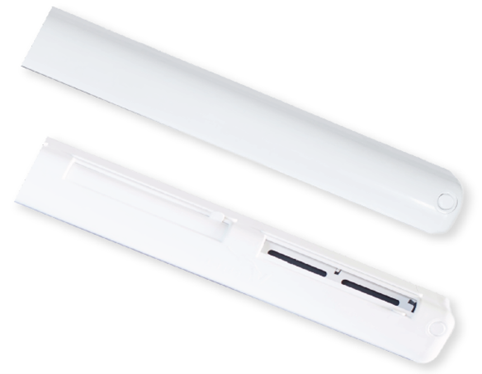The Incredible Art of Acoustic Ventilation
Building technology has been advancing over the years, especially regarding energy efficiency and the ability to retain the warmth we pay so much to create. Window design has been a key part of this advance and we have seen many worthwhile improvements. Double glazed units and the thermal performance of frames have brought an enormous reduction in heat loss, which is good for the planet as well as our pockets.
Why is Acoustic Ventilation needed?
Airtightness
While reducing the permeability of the building envelope pays dividends in terms of heat leakage, it has also delivered new problems in terms of the internal environment. Less air movement brings a build-up of carbon dioxide, creating a stuffy and uncomfortable space. There is also an increase in humidity as the water vapour cannot escape. Increased humidity brings mould and disease and, over time, brings damage to the building. More and more we are seeing examples of problems caused by poor ventilation and the new Part f of the building regulations recognises this. The new regulations highlight the increased need for ventilation. https://www.gov.uk/government/publications/ventilation-approved-document-f
Noisy Locations
As we try to encourage people to needless car journeys and search to fill the shortage of housing, we are moving to more dense urban housing. Those living within walking distance of their workplaces and shops can manage without cars on a day-to-day basis, but it still leads to people living in noisy locations. We also need schools and student accommodation in urban environments and, of course, build hotels near main roads and railways. Our desires are creating something of a conundrum.
We need to find ways to allow natural ventilation to preserve our health and buildings at the same time as keeping the noise out. Isolating the inside from the outside can protect us from the noise but leaves us in an uncomfortable unhealthy living space. Is it possible to let in air and keep out noise at the same time?
Solutions
- The ability to regulate the natural input of air through the window is a long-established and comfortable situation for most people. They may even be prepared to put up with some noise when they throw open their windows for purge ventilation. However, the ability to live work, and sleep in a quiet environment is of paramount importance. It is also enshrined in the building regulations and recommended in guidance from the World Health Organisation. So, we need to use acoustically attenuated window vents. https://staging.brookvent.co.uk/acoustic-window-ventilation/
- Mechanical Ventilation Systems – This does mean you can maintain the separation of inside and outside. https://staging.brookvent.co.uk/heat-recovery-ventilation-systems/
How do acoustic vents work?
I am often challenged by building designers to explain how a vent that a clear passage of air has, can possibly stop sound. It seems like an impossible magic trick. I must admit it does seem an improbable answer to a difficult question. However, these vents have been tested to prove their performance and we can view all the data, graphs, and octave band ratings to back up our assertions.
Part of the key to reducing sound is the materials used. We are all familiar with entering an empty room and the noise echoes around. Every footstep on a floor is magnified by the hard walls and even small noises make a big impression. Now enter the same room filled with furniture, a soft carpet, curtains, and wallpaper. All these elements are made of materials that can absorb sound energy. The same noises are deadened and markedly reduced. In an acoustic vent, the materials absorb some of the sounds so less makes it through to the quiet side.
The material is not the only thing reducing the sound. Acoustic vent designers also draw on their knowledge of sound and its properties. A fact that the average person might not have considered. That is that volume is pressure. How we hear sound is about pressure being applied to our eardrums. More pressure, more sound energy, more volume. So, the internal parts of an acoustic vent look to dissipate pressure thus reducing the noise that we can hear.
https://brookvent.ie/product/airvent-sm-acoustic/
Product Quality
Product quality is vital for many reasons, and we have achieved this through incredible engineering.
The vent allows the air to pass through but allows the sound energy to be absorbed, and dissipated so that the building user can live, work or sleep with fresh air in peace and quiet. Quite a feat. While this design and engineering are very clever it is now an everyday item. We can enjoy the effects of these vents in our homes and not give them a second thought. Reduction in the noise of 55dB Dn,e,w can be achieved, which means you can happily sleep in a building beside a busy motorway. There are versions of acoustic vents which will use a simple slot through the window frame. We can also offer glazed in vents or even set on top of the window over the frame.
https://staging.brookvent.co.uk/glazed-in-window-vents/
Dark Art? When dealing with Acoustic ventilation the whole thing can seem like dark art. With acoustic reports quoting references and numbers that are sometimes difficult to understand. The good news is that we at Brookvent can help navigate the correct information to guide you and your customers to the right product in the right place.
https://staging.brookvent.co.uk/contact/window-vent-enquiry/










